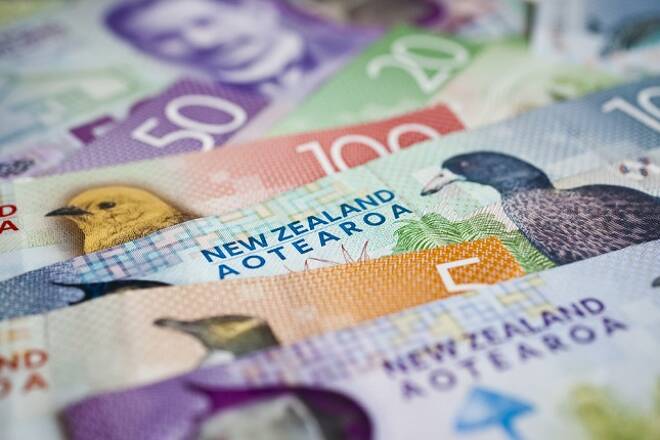Advertisement
Advertisement
Kiwi, Aussie Surge as Investors Ramp Up Hope for More China Stimulus, Trade Deal
By:
The strengthening U.S. economy announced its presence with authority, driving the Dollar/Yen sharply higher last week. The Australian and New Zealand Dollars finished sharply higher last week buoyed by a combination of economic data and hopes that China would ramp up fiscal stimulus.
Last week’s Forex markets featured higher-than-average volatility with the active price action spread across oceans and continents. The volatility was driven by a combination of several factors including geopolitical events, central bank decisions, economic data and multiple-shifts in demand for risky assets. The end of the week, the U.S. Dollar stood tall against the Japanese Yen while struggling against the Australian and New Zealand Dollars.
U.S. Dollar
The U.S. Dollar was boosted last week by solid economic data that likely kept the Fed on track for a December rate hike and at least three more in 2019.
Last week, the December U.S. Dollar Index settled at 96.343, up 0.215 or +0.22%.
The Conference Board’s Consumer Confidence report came in at 137.9, beating the 136.3 estimate. The previous month was revised lower to 135.3, but this didn’t matter to investors.
The ISM Manufacturing PMI came in lower than expected at 57.7, versus a 59.0 forecast.
Friday’s U.S. jobs report for October showed the Non-Farm employment Change rising by 250K, versus a 194K forecast. However, the previous month was revised lower to 118K. The Unemployment Rate was 3.7% as expected. Average Hourly Earnings came in at 0.2%. Wages are up 3.14 percent over the past 12 months through the end of October.
Japanese Yen
The strengthening U.S. economy announced its presence with authority, driving the Dollar/Yen sharply higher last week. After weakening earlier in the month due to heightened volatility in the global equity markets, the Dollar/Yen posted a solid gain last week as investors shifted their focus to the divergence in the monetary policies of the hawkish U.S. Federal Reserve and the dovish Bank of Japan.
Last week, the USD/JPY settled at 113.200, up 1.305 or +1.17%.
The Bank of Japan (BOJ) created more pressure for the Japanese Yen last week when it decided to leave interest rates unchanged while revising down inflation forecasts. This was the latest sign it has failed to make any progress towards it two-percent target despite several years of massive stimulus and other forms of monetary policy easing.
Additionally, BOJ Governor Kuroda also said the central bank was paying close attention to several global issues, adding that a lingering trade dispute between the United States and China could affect the Japanese economy.
Australian and New Zealand Dollars
The Australian and New Zealand Dollars finished sharply higher last week buoyed by a combination of economic data and hopes that China would ramp up fiscal stimulus. The Aussie and Kiwi even spiked higher late in the week on a report from Bloomberg that President Trump had asked his cabinet to prepare documents for a trade deal. This notion, however, was shot down on Friday by Trump’s Senior Advisor Larry Kudlow, who said there was no truth to the report.
Last week, the AUD/USD settled at .7198, up 0.0111 or +1.57% and the NZD/USD finished at .6647, up 0.0126 or +1.93%.
As far as domestic economic data was concerned, Australian Quarterly Consumer Inflation disappointed somewhat by coming in at 0.4%, matching the previous quarter, but missing the 0.5% forecast. Retail Sales were also disappointing, posting a gain of 0.2%, below the 0.3% forecast.
Bullish Aussie traders did have something to celebrate, however, following the release of stronger-than-expected Trade Balance data. The trade balance came in at 3.02 billion, much higher than the 1.71 billion forecast. The previous month was also revised higher to 2.34 billion.
There wasn’t much to celebrate in New Zealand as far as economic data was concerned. Most of the bullish price action in the Kiwi was optimism tied to expectations of fresh stimulus from China and the end of the trade dispute between the United States and China.
The major report was ANZ Business Confidence. It came in at -37.1, a slight improvement from the previously reported -38.3. It may have reduced speculation that the Reserve Bank of New Zealand was planning a rate cut.
About the Author
James Hyerczykauthor
James is a Florida-based technical analyst, market researcher, educator and trader with 35+ years of experience. He is an expert in the area of patterns, price and time analysis as it applies to futures, Forex, and stocks.
Did you find this article useful?
Latest news and analysis
Advertisement
